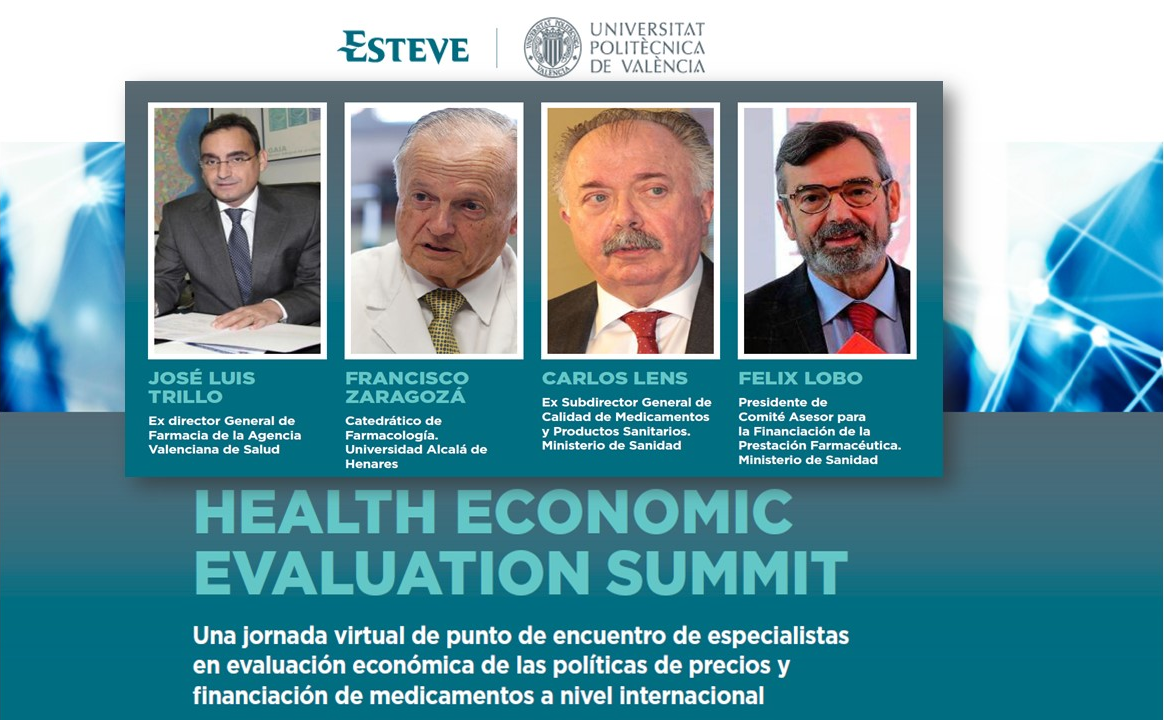28/10/2020
IT IS POSSIBLE TO MAINTAIN THE LEVEL OF INNOVATION AND THE SUSTAINABILITY OF THE NHS AT THE SAME TIME
To achieve this, the NHS must define value in health, the cost it is willing to pay for innovation, and under what conditions it would make such payment
A major challenge is payment by results, which reduces uncertainties and ensures that the supplier takes the real consequences of the innovation into account
The speakers highlighted the need to provide the Ministry of Health with a large budget and to offer incentives to innovative companies

Innovation and sustainability must go hand in hand, but this requires a major budget allocation for health, a comprehensive and stringent pharmaceutical policy, and recognition of innovation in the industry. These are the main conclusions of the virtual Health Economic Evaluation Summit (HEES), a meeting point for specialists in the economic evaluation of pricing and financing policies for drugs at an international level. Organized by the Chair for Health Economics and Health Management, made up of ESTEVE and the Polytechnic University of Valencia, over three different sessions.
During the HEES seminars, experts stressed the need to promote innovation, to include it in the NHS and, above all, to analyse how to do all this using really useful tools. To this end, it is essential to have a robust Ministry of Health, with a substantial budgetary allocation and sufficient resources. And, of course, to provide incentives for companies that are making an effort in innovation.
The importance of the criterion of how much such companies contribute to the national GDP has also been highlighted, an evaluation criterion that should be given greater weight in order to stimulate the productive fabric. In this sense, the speakers were clearly in favour of maintaining any agreement that facilitates the sustainability of the NHS, such as the current one with Farmaindustria, which allows for the return of any annual growth in pharmaceutical spending above the nominal GDP by the industry.
Payment by results? Yes or no and how
During the HESS webinars, it was stated that the challenge for the NHS is to determine what it understands by value in health and to decide how much it wants to pay for innovation and its benefits. Experts have agreed that the incorporation of innovation is currently faster, but also that it costs more, and that never before have we had so much innovation yet so few resources to pay for it. It is therefore crucial to determine the procedure for evaluating and setting its price.
Payment by results is one way to reduce uncertainties and to ensure that the supplier of the innovation is not indifferent to the real consequences of the use of the drug. However, the major challenge is to define the value of the drug and to measure these results.
The former director of the Andalusian Health Technology Assessment Agency (AETSA by its Spanish initials), Sandra Flores, pointed out that "the Health Technology Assessment Agencies (HTAA) are prepared and can provide high quality support in the evaluation and positioning of drugs in the NHS, but in Spain, this responsibility falls within the AETSAs portfolio of services. Furthermore, collaboration at European level is clearly committed to strengthening the role of the HTAA in this area, but it is a matter that still needs to be addressed here in our country".
In Spain, efforts have been made to promote the Valtermed initiative, but information systems need to be properly designed to ensure that they are interoperable and efficient. In this sense, there has been a lot of debate on how useful Big Data and Real World Data models really are, a technology that has been available for years but has not been applied all that much in the health sector. According to Agustín Gómez de la Cámara, head of the Research and Clinical Trials Service at the 12 de Octubre Hospital in Madrid, "one of the main objectives of these tools is to generate predictive models that allow us to anticipate health needs, offer more effective healthcare, and optimize clinical management and patient treatment and care. And all this using readily available sources of information such as electronic health records, regulatory data...".
A few international experiences
The meeting also provided an opportunity to share the experiences of a number of EU Member States in relation to the evaluation of the price of drugs. In the case of France, for example, laboratories have to specifically apply for funding for the drug once it has been authorised, a procedure that goes through the Haute Autorité de Santé (HAS) and the Comité Economique des Produits de Santé (CEPS). And two crucial criteria must be taken into account: the ASMR (therapeutic progress and added value), and the SMR (analysis of efficacy and adverse effects).
As is the case in Spain and in other countries, Italy has a specific law (passed in 2012) that speeds up the procedure for priority or orphan drugs. The government has also published a new decree this year with two new crucial pricing criteria: unmet needs and added value.
Finally, in Portugal, they carry out a pharmacotherapeutic analysis that includes comparability with other available alternatives and the added value of the drug, and a pharmaco-economic analysis that takes into account the reduction of economic uncertainty and increased accessibility. All this is continuously monitored which may mean that the price needs to be re-evaluated.



